If you are going to spend hours of your precious time knitting a pair of socks you will want to choose a soft but durable yarn to knit them. Helping you to have a finished pair of hand-knit socks that are comfortable, easy to wash, and will give you years of wear. Read on to find out why sock yarn is worthwhile using.
Sock yarns are wonderfully versatile and can be used for knitting many other types of projects. They are the perfect choice for knitting shawls, scarves, cowls, mittens, gloves and hats as well as socks.
About Sock Yarn
You may be unsure where sock yarn fits into the yarn “family”. Looking at Knitting Squirrel’s Yarn Weights Comparison Chart can help. In the UK sock yarn is considered to be a ‘fine’ yarn, in the same class as our 4-ply weight and baby yarns. International numbering system 2. In the US sock yarn is more often classified with fingering weight yarns.
Socks are usually knit using needles between 2.25mm and 2.75mm. But as sock yarns are often used for other projects such as shawls you often be using the needle specified for the pattern.
There is a wonderfully colourful selection of sock yarn available and many commercial brands are instantly recognisable: Opal, Zauberball, Sausalito, Jawoll Magic, Regia Designer Line, and Trekking sock yarn, to name but a few. There is also a dynamic selection of hand-dyed yarns available from indie dyers.
Although these yarns have a very individual ‘look’ they all have something in common.
Socks
- Socks are worn daily.
- They have to be able to cope with abrasive wear and tear.
- They need to be washed frequently.
- Most people do not have time to handwash all their socks.
The sock above shows the wear and tear on a favourite pair of pure wool socks hand knit using a gorgeous skein of Indie dyed wool. Wool on its own is wonderfully soft and comfortable but doesn’t have the durability of sock yarn. For this reason, commercial sock yarn producers usually use a blend of 75% wool to 25% nylon. The wool may be a named variety like merino but usually, it is just blended wool.
Wool
Wool has amazing properties. Wool fibres absorb 30% of their weight of water without feeling wet to the touch and retain their feeling of warmth so are wonderful at drawing moisture away from your skin. An important attribute for your hand-knit socks. I have found that my feet still feel reasonably warm even after accidentally stepping back into a rock pool while photographing a knitted hat at the beach. Wool’s ability to have a moisture level in the fibre keeps it from conducting static electricity.
Wool fibres have scales along their length and when wool fibres are agitated with water and heat, the scales interlock with each other and the wool felts. This is sad when it happens to a pure wool pair of hand-knit socks and even careful hand washing doesn’t seem to prevent it over time.
Superwash Wool
As socks need to be washed frequently, they shouldn’t shrink and felt.
Most wool used in sock yarn has been processed to turn it into ‘superwash’ wool. To do this the scales on the surface of the fibre are removed or chemically treated to prevent the wool from felting during the washing process. The process gives the wool a lustrous appearance as the fibres have a smoother surface.
Superwash wool is machine washable.
A problem with the ‘superwash’ process is that the elasticity of the wool fibre can be affected.
Adding Nylon
One of the pleasures of knitting with wool is its ability to stretch and then recover to its original shape. As this elasticity is affected by the superwash process, adding nylon helps. Nylon is even more stretchy than wool, it is very strong and able to withstand great tension before breaking.
This helps ensure your hand-knit socks are easy to put on and then they snugly fit the shape of your foot.
Nylon is very strong whether wet or dry and it is fungal resistant which is also a useful attribute for a sock.
Blending Superwash Wool and Nylon
The nylon is normally added to the wool before the fibre is spun into yarn to ensure that the nylon is evenly mixed through the sock yarn.
The standard blend for durability and comfort seems to be 75% superwash wool and 25% nylon.
This blending gives hand-knit socks made using sock yarn the ability to be washed in the washing machine without felting and shrinking. The 25% nylon adds strength and durability while the 75% superwash wool means the socks are comfortable, cosy and soft to wear.
When you have spent your precious time knitting a beautiful pair of socks either for yourself, a friend or a family member, you will want the socks to last as long as possible and look gorgeous no matter how the socks are washed. Although, it should be noted that sock yarns should be washed according to the directions on their ball band and they should not be put into the tumble dryer.

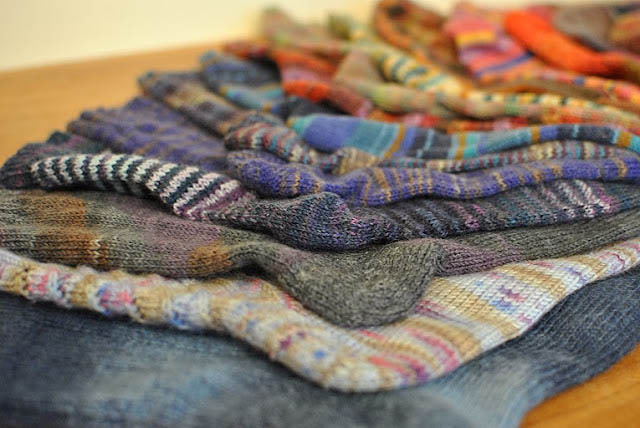
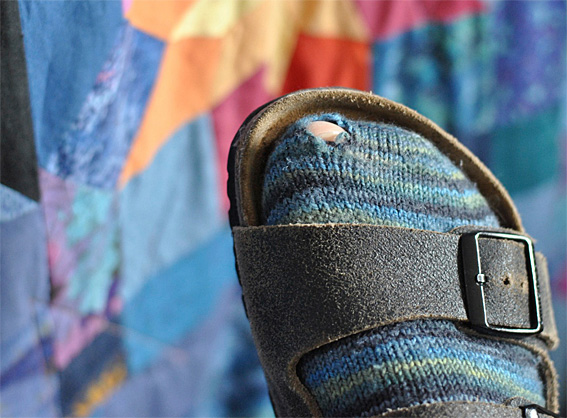
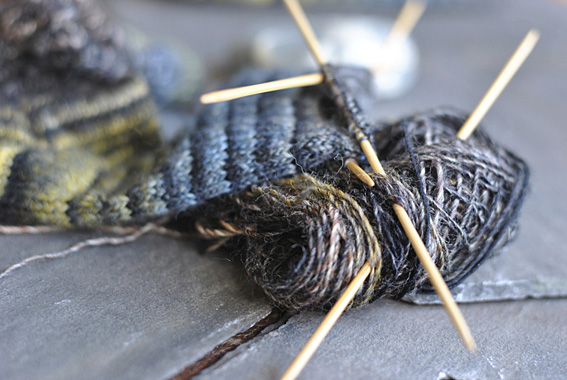
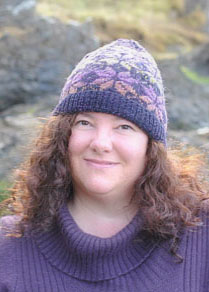
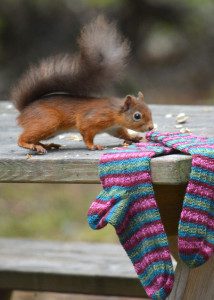
I was reluctant to use nylon/wool mix for socks but discovered world of wool do a bio nylon. I am now spinning some with merino and excited about socks that don’t have holes in the first week of dog walkies!
That is really amazing to find a bio nylon for hand spinning. I’ve added a link to the website. I wish the yarn companies would also switch to bio nylon for the sock yarns. Let me know how your new socks work out for you when you have finished making them and have been wearing them for a while. It would be great to hear about your experiences. Thank you.
Hi Nicolette K. I have been searching your site for a sock pattern in worsted weight yarn, Do you have any basic sock pattern for that. I have Alpaca yarn not processed but just wound that turns out to be a thick and thin at times, but mostly dk wt. And I love the bumps lumps here and there in the knitting of it, I’ve manage to figure out a sock out of it but would likea neat pattern from you. thanks
I’m sorry, I don’t have a pattern for worsted weight yarn at the moment. I’ll add it to my list. Nicolette
I hear what you say about synthetic mix yarns and may be I should try one. However, I’m such a strong fan of natural fibres that is seems to go against the grain for me. I want a machine-washable natural fibre (or mix) and wondered whether you have tried a wool/silk mix or a wool/cotton mix? Do you have a favourite machine-washable natural sock yarn?
Hi Sue, When it comes to the commercial sock yarns I can’t think of any that are don’t have some nylon/polyamide in them. It really is because of the added strength and washability. I have seen patterns for socks knit using the J&S Heritage Shetland yarn but I haven’t made any because they would require hand washing. Some of the hand dyed yarns are 100% Superwash Merino or Merino/Silk blends. I have knit socks out of both of these yarns. But I don’t wear them on a daily basis the way I would with my 75% wool 25% nylon/polyamide socks. When I first started knitting socks, I knit quite a few pairs using all natural fibres like wool that I bought from Indie Hand Dyers, but a couple of incidents like, Saturday, my husband helpfully washed the wool wash on a 40 deg cycle instead of the wool cycle and suffice to say, we have a felted sweater and a couple of felted pairs of socks, moved me away from sock yarn without nylon. Sorry to say, I don’t honestly have a favourite natural sock yarn. Nicolette
Love your site…. I looking for a pattern using sock yarn. Can you help out?
Txs!
Should be for children’s mittens using sock yarn.
Try doing a search on revelry.com there are lots of wonderful patterns available there. You should be able to find one you like.